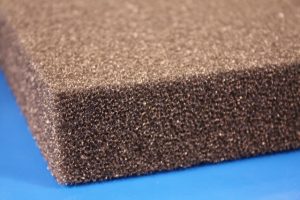Key Features of Flexible Polyurethane Foam
Written by: The Foam Factory
Before purchasing polyurethane foam, be wary of the properties that are associated with it.
Flexibly polyurethane foam is one of the most common foam types available on the market today. However, before you go out and replace your couches and sofas with polyurethane, it’s important that you understand all of the foam properties that are associated so you can ensure that you are choosing the right product. Here are some of the essential properties that you should be aware of when it comes to cushion replacement.
Density
The density of the foam product affects its ability to provide support. Generally, when the foam’s density levels increase, its durability follows as well. Other factors related to durability include flex fatigue, compression, and dishing.
IFD
IFD is a measure of the cushion foam’s firmness – which is independent of its’ density. When it comes to upholstery, an IFD of 25 percent can equate anywhere from five pounds to 50 pounds. Depending on the usage of the foam, you’ll want to increase and decrease its’ IFD. For example, firm foams are often used to create a different feeling in thin-profile applications like the armrest or backrest to allow it to create and hold its certain shape.
Compression Modulus
Compression modulus is typically a function of the foam density. Essentially, similar in concept to density, the higher the density is, the higher the compression modulus will be. This also plays a role in how hard and soft the foam pieces will be when it comes to compression. When replacing seat cushions, it’s important that you factor in both the compression modulus as well as the foam density levels.
